
If you’ve been wondering whether saunas burn calories or how many calories you burn in a sauna, this article answers all your questions.
We also answer your questions about whether sauna heat helps you lose weight and burn fat.
We present a sauna calories calculator (view the calculator here) that lets you estimate energy expenditure due to passive heating. Research suggests that passive heating may boost metabolism by 25-33%.
We also present a sauna weight loss calculator (view here) that estimates how much weight you can expect to lose during a 20-minute session.
But remember that most of the weight loss experienced is due to water loss through sweating. You regain most of it when you rehydrate by drinking water and electrolytes (Leppäluoto and associates (1986).
We also explain the limitations of sauna use for weight loss.
You may learn more about the health benefits of sauna here.
Contents:
How many calories do you burn in a sauna?
–Does sauna boost metabolism and burn calories?
–Sauna may boost metabolism by 25-33%: Study
–Calories burned in a sauna
Does sauna help you lose weight?
Sauna vs exercise
–Heart rate in a sauna similar to 60-100 watts on exercise bike
–Health benefits compared with moderate exercise
Does sweating burn calories?
–Do you burn calories when you sweat?
–Sweating regulates body temperature
What is a sauna?

A sauna is a room designed for people to experience heat-induced perspiration or sweating under relaxation for a limited time (typically 15-30 minutes).
A sauna uses dry or wet heat.
Traditional Finish saunas are dry saunas. Steam rooms or baths, such as Turkish baths (hammam), are wet saunas, but some do not consider them to be saunas.
Dry saunas are usually wooden rooms (cedar, spruce, or aspen) in which users experience exposure to heated air at a low relative humidity of 10-20%. Dry saunas use wood-burning stoves, gas, or electrical heaters for heating to temperatures of 150-195 degrees Fahrenheit (65.6-90.56 degrees Celsius).
A wet sauna is typically a steam room (Turkish-style bath) heated to temperatures of about 110-120 degrees Fahrenheit (43.33-48.89 degrees Celsius) and relative humidity close to or equal to 100%.
Infrared saunas have become popular in recent years.
Infrared rays supply heating applied directly to the body instead of the surrounding air at 120-140ºF (49-60ºC), without any strict humidity control.
How many calories do you burn in a sauna?
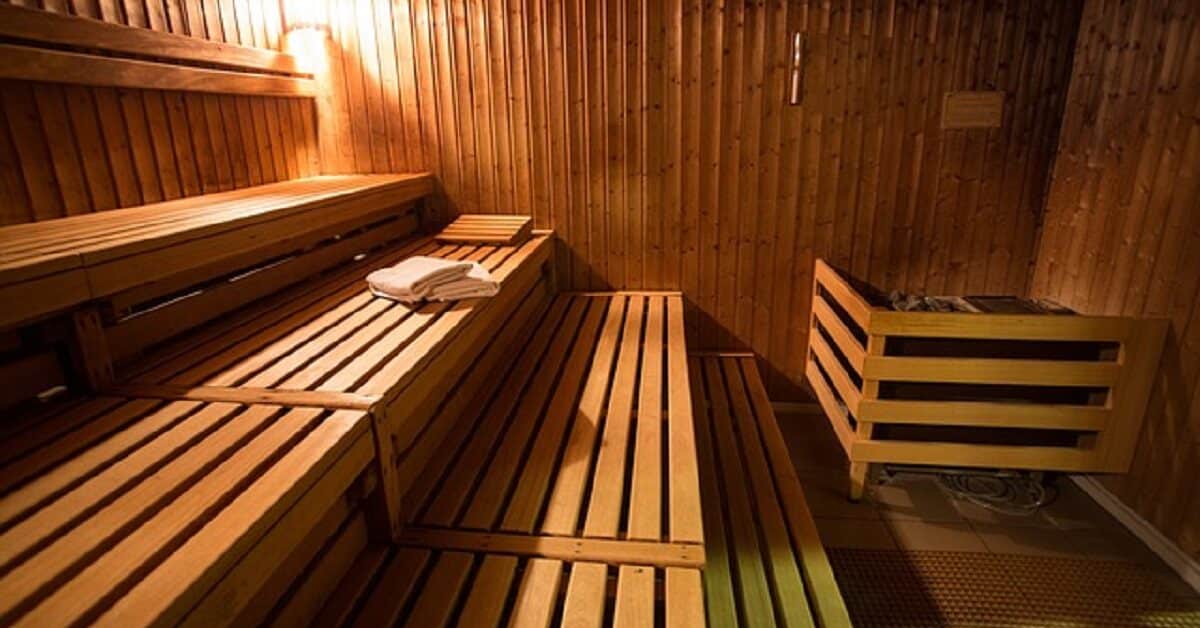
Saunas burn calories by increasing metabolism.
However, you may have come across sources that claim that you burn lots of calories in a sauna.
Some claim that dry sauna exposure increases metabolic rate enough to burn up to 200-600 calories in a half-hour session.
For perspective, 200-600 calories per half-hour is comparable to calories burned per hour performing vigorous exercises, such as bodyweight squats, running, and cycling.
Thus, a claim of 200-600 calories burned per half-hour suggests that resting in a dry sauna may burn as many calories as intense cardio activity.
We shall examine research studies to see whether this is true.
Does sauna boost metabolism and burn calories?
A study by Leppäluoto and associates (1986) suggested that while sauna sessions significantly increased energy expenditure (calories burned), the increase was far less than some sources claim.
Leppäluoto and colleagues (1986) studied the effects of exposing ten healthy male subjects to dry heat in a Finnish sauna (>80 degrees Celsius) for an hour twice a day for 7 days.
The rectal temperature of the subjects rose by 0.8-1.1 degrees Celsius after each exposure. Pulse rate (heart rate) increased from 75-80 beats/minute to 106-116 beats/minute (light physical activity range).
Metabolic rates increased significantly by 25-33% after the first day, the authors also reported.
Pulse/heart rate is a measure of exercise intensity.
The American Heart Association recommends the following target heart rates:
Moderate exercise intensity: 50% to about 70% of your maximum heart rate
Vigorous exercise intensity: 70% to about 85% of your maximum heart rate
Sauna may boost metabolism by 25-33%: Study
Leppäluoto and associates (1986) reported that sauna sessions boosted metabolism by 25-33% after the first day of heat exposure.
However, pulse rate and temperature decreased significantly after multiple exposures. Rectal temperature decreased significantly after the 3rd day, while pulse rate decreased after the 6th day.
The researchers attributed the decreases to the subjects adapting to heat exposure.
An increase in metabolic rate (RMR) of 25-33% while resting in a sauna is significant. It showed that sauna exposure increased calories burned by boosting metabolism.
Studies have shown that cryotherapy (cold treatment) also burns calories by boosting metabolism.
Calories burned in a sauna

We shall now do some quick calculations to help you appreciate the effect of sauna on calories burned.
The resting metabolic rate (RMR) of a 35-year-old male, standing 177.8 cm (70 inches) tall and weighing 75 kilograms (165.347lbs), is 1751.608 kcal/day (you may scroll down to use a BMR/RMR calculator).
A resting metabolic rate of 1751.608 kcal/day is equivalent to 72.984 calories/hour.
If our 35-year-old subject (see the previous section) experiences a 25%-33% percent increase in resting metabolic rate during passive heating, we may quantify the effect as shown:
Calculation:
- A 25% increase raises the subject’s RMR from 72.98 calories/hour to 91.23 calories/hour (an increase of 18.25 calories per hour)
- A 33% increase raises the subject’s RMR from 72.98 calories/hour to 97.069 calories/hour (an increase of 24.085 calories per hour).
[Note: You may use our sauna calories calculator (follow link) to obtain an individualized estimate of calories burned based on Leppäluoto and associates (1986).]
Our subject’s energy expenditure of 91.23-97.07 calories/hour is roughly equivalent to calories burned when you fidget while sitting (see dynamic chair-based fidgeting).
The numbers represent a modest increase in metabolic rate compared to 200-600 calories per half-hour some sources claimed.
The increase in calorie expenditure due to sauna exposure is much less than the 200-600 calories. But it is still significant when you consider that RMR constitutes an estimated 60-70% of the total daily energy expenditure (TDEE).
The estimate by Leppäluoto and associates (1986) that the metabolic rate of subjects increased by 25-33% is consistent with Cullen and associates.
Cullen and associates noted that energy expenditure due to passive heating is markedly lower than physical exercise because it does not involve skeletal muscle activity.
Sauna Calories Calculator
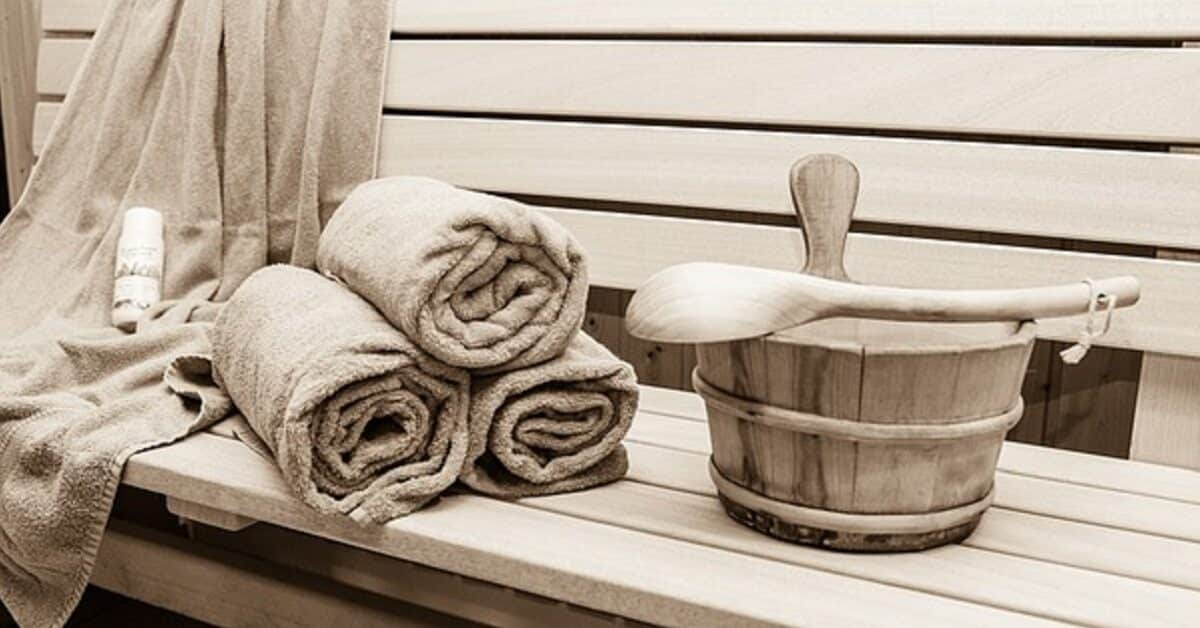
Our Sauna Calories Burned Calculator (see below) is based on the study by Leppäluoto and associates (1986). Therefore, the results are only relevant to conditions specified in the study (read about the study here: Does sauna boost metabolism?).
Keep in mind that the researchers reported the subjects experienced smaller increases in rectal temperatures and pulse rates on the 3rd and 6th days, respectively. The trends suggested an adaptation to heat exposure and thus smaller heat-induced boosts in metabolic rates after a week of the treatment.
Does sauna help you lose weight?
Summary: Saunas increase energy expenditure by boosting metabolic rate (see the previous section). However, the extra calories burned are too small for the practical weight loss goals. Most of the measurable weight (mass) loss during heat exposure is due to water loss from sweating, according to researcher Sascha Ketelhut. You may prevent sauna-induced dehydration and mass loss by rehydrating during or after the session (view our sauna weight loss calculator).
Some have promoted saunas as offering an “effortless” method for losing weight based on the claim that the increased metabolic rate is sufficient to burn lots of fat.
However, studies suggest that while passive heating may increase your metabolic rate and energy expenditure, the overall increase is not enough to meet practical weight loss goals.
Most of the measurable weight loss after passive heating is due to water loss from sweating (see Does sweating burn calories?).
You may regain most of the “weight loss” by rehydrating (drinking water) (Podstawski et al., 2014; Gutiérrez et al., 2003; Servidio et al., 2003).
Thus, claims that you lose weight by burning lots of calories during a sauna session may be due to a misunderstanding of scientific research findings.
Sauna vs exercise
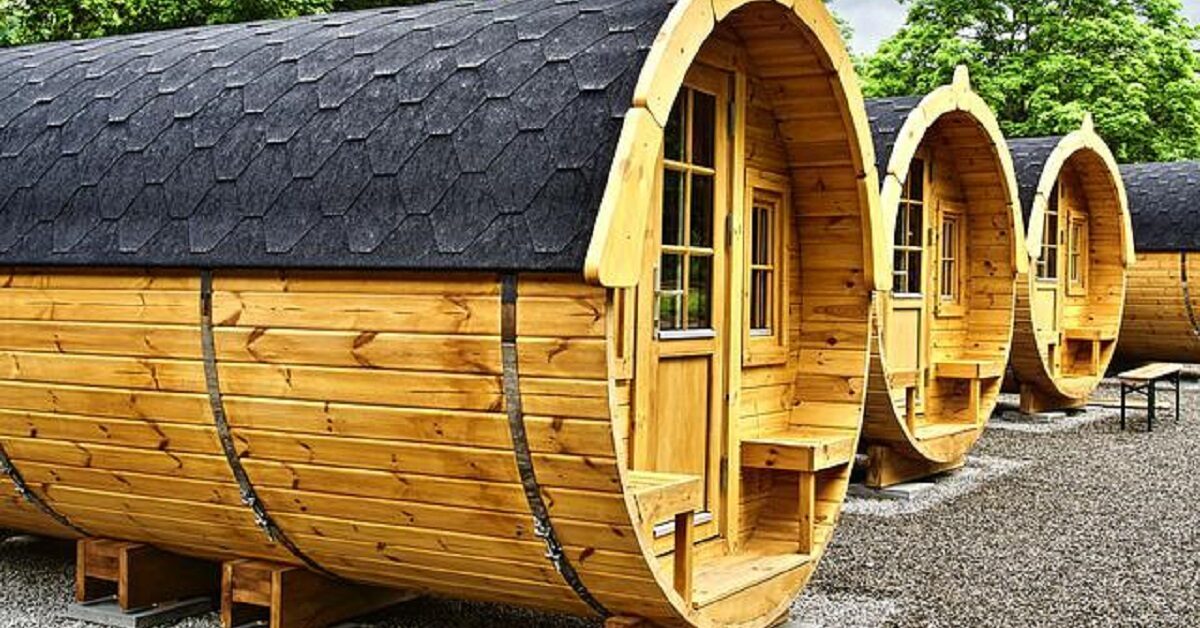
Ketelhut and Ketelhut (2019) reported that the effects of heat exposure on the cardiovascular system were comparable to moderate dynamic exercise load (such as stationary biking).
Subjects experienced increases in heart rate, blood pressure, and myocardial (heart muscle) oxygen consumption comparable to moderate-intensity biking.
However, while heart muscles may have burned more calories due to increased activity, only a modest increase in overall energy expenditure occurred because the skeletal muscles were not active.
Skeletal muscle activity accounts for most of the increase in energy expenditure in the transition from a resting state to a physically active state.
For better understanding, let’s take a closer look at the study:
Ketelhut and Ketelhut (2019) investigated the effect of passive heating on blood pressure (BP) and heart rate (HR).
The study involved 19 healthy adult volunteers (including 7 adult women aged 46.4±10.2 years; BMI=24.4±2 kg /m2).
The authors measured the BP and HR of the subjects during and after a dry sauna session (93°C, 13% humidity) that lasted 25 minutes.
They also took measurements during a 30-minute rest period after the session.
The authors compared the measurements with those obtained from a moderate-intensity exercise session on a stationary bike.
They found that heat exposure caused a significant increase in systolic BP, diastolic BP, and heart rate. Passive heating also caused a significant increase in systolic BP x HR (a measure of myocardial oxygen consumption rate or cardiac load).
The measurements decreased significantly during the rest period after the heat therapy session.
Heart rate in a sauna similar to 60-100 watts on exercise bike

The researchers reported that increased cardiac load due to a sauna session was comparable to a moderate-intensity workout of 60-100 watts on an exercise bike.
However, the authors were only discussing the effects of passive heating on the cardiovascular system. The analysis excluded the effects on skeletal muscles that generate motive force during calorie-burning physical exercise.
“Comparing the two conditions (sauna and stationary bike exercise), the participant’s blood pressure and heart rate reached the same levels during the sauna session as they did with a load of about 100 watts during the exercise test,” lead author Sascha Ketelhut said, according to Science Daily.
“A sauna session is a physical strain. Its long-term positive effects (on the cardiovascular system) are similar to sports activities,” Ketelhut added.
The researcher explained that the long-term effects of acute passive heating on the cardiovascular system were similar to moderate sports activities. However, sauna exposure did not burn enough calories to cause significant weight loss because the skeletal muscles were not active.
“The effect is too low as there is no muscle activity,” Ketelhut said. “Although we lose weight in the sauna, these are just the fluids that we sweat out. One should rehydrate after a sauna session, though.”
In other words, the cardiovascular system’s reaction to passive heating was similar to moderate-intensity exercise. However, it did not cause an increase in calories burned comparable to a physical workout because the skeletal muscles were not active.
Note: A moderate dynamic exercise intensity of 60-100 watts is equivalent to 216-360 calories/hour (3.6-6.0 cal/min) (see calculation below):Energy (kcal or calories) = Average Power (Watts) x Duration (hours) x 3.6
= 60 watts x 1 x 3.6 = 216 calories/hour (3.6 kcal/min)
= 100 watts x 1 x 3.6 = 360 calories/hour (6 kcal/min)For perspective, a 21-year-old male standing 180cm tall (71 inches) and weighing 73 kg, burns about 266.826 cal/hr (4.447 cal/minute) exercising on a trampoline with moderate intensity (view our calories burned on a trampoline calculator).
The same subject performing push-ups with moderate intensity burns about 289.697 cal/hr (4.828 cal/min) (view our calories burned by push-ups calculator ).
The average person burns about 75 calories/hour (1.25 cal/minute) sitting quietly watching TV.
An adult American woman weighing 78kg (172 pounds) burns 63-78 cal/hour while sleeping (1.05-1.3 calories/min).
Health benefits compared with moderate exercise

Cullen and associates explained in a media article that due to muscle inactivity, passive heating does not replicate all the health benefits of exercise, such as promoting fat loss, weight loss, and boosting muscle mass.
Thus, passive heating is not a substitute for physical exercise.
However, the authors concluded that saunas offer health benefits comparable to physical exercise. The benefits include improved cardiorespiratory fitness, vascular health, and blood sugar control (Cullen et al., 2020).
A study by Podstawski and colleagues (2019) further corroborated the studies we have discussed so far.
The research team studied the effects of hot bathing on the physiological parameters of overweight and sedentary young men.
The study involved 45 overweight and sedentary young men (aged 20.76±2.4years). The subjects engaged in four successive 10-minute dry sauna sessions (temperature: 90-91°C; relative humidity: 14-16 %) with 5-minute breaks in-between sessions to cool down.
The researchers reported a significant increase in heart rate (HR), energy expenditure (increased calorie burn), and blood pressure after each 10-minute session.
The subjects lost an average of 0.65 kg of body fluids due to sweating.
Energy expenditure (HR) increased significantly during successive sessions despite 5-minute breaks between sessions.
For instance, the average HR increased from 98 bpm during the first session to 133.36 bpm during the fourth session. The increases were within the range of moderate-intensity exercise response for 20-year-olds.
Heart rate can be used as a measure of metabolic rate. An increase in heart rate from a normal resting average of 72 bpm to 133.36 bpm indicated a moderate increase in metabolic rate.
In a follow-up study, Podstawski and colleagues (2022) reported that heart rate, energy expenditure, blood pressure, and body mass loss (BML) were positively associated with overweight.
The measures of overweight and obesity used in the study included body mass index (BMI), percent body fat, and visceral fat.
They also reported that measures of energy expenditure, such as heart rate, oxygen uptake, and respiratory rate increased more significantly in obese than non-obese subjects.
Does sweating burn calories?

Summary: Sweating in a sauna does not burn significant additional calories. Although the biophysical process of sweating expends some energy, the calories burned are not enough for fitness and weight loss purposes. You need to engage in dynamic workout to burn more calories.
[Note: Sweating may also help in the excretion of toxic heavy metals that accumulate in the body.]
Do you burn calories when you sweat?
Experts debated the theory that saunas burn calories through increased sweating in the 1980s.
The debate centered on an article published by Franklin and Rubenfire (1980), titled “Losing Weight Through Exercise.”
In the article, the authors argued against “effortless weight loss” through increased sweating. They pointed out that sweating only temporarily reduced weight until rehydration occurred.
Dean (1981) reacted to the article, saying the authors were mistaken in assuming there was no caloric consumption associated with sauna sweating.
According to Dean, it was an oversimplification to assume that water simply “leak[ed] out” of the body without an energy cost. The author argued that sweating was part of a complex thermoregulatory process that consumes energy. The process involves increased heart rate, cardiac output, and metabolic rate.
Dean claimed that the loss of 500g of sweat in a sauna consumed nearly 300 kcal.
However, Searle rejected Dean’s claim, saying it was highly doubtful that the loss of 500g of sweat consumes 300 kcal.
Searle argued that accepting Dean’s claim would imply, incorrectly, that people who live in hot climates and sweat a lot need higher caloric intake compared with people in temperate climates.
Searle also rejected Dean’s suggestion that regular sauna use may be effective for cardiovascular conditioning. The author argued that Dean’s claim could not be accurate because exercise-induced cardiovascular fitness was due mainly to changes in skeletal muscle strength and not heart muscles.
However, we discussed in previous sections that studies appear to support Dean’s claim that sauna may help improve cardiovascular health. But there is still no evidence to support the claim that sweating burns calories.
Sweating while sitting in a sauna does not burn enough calories to achieve significant weight loss. Physical exercise is more effective for weight loss than passive heating-induced sweating.
Sweating regulates body temperature
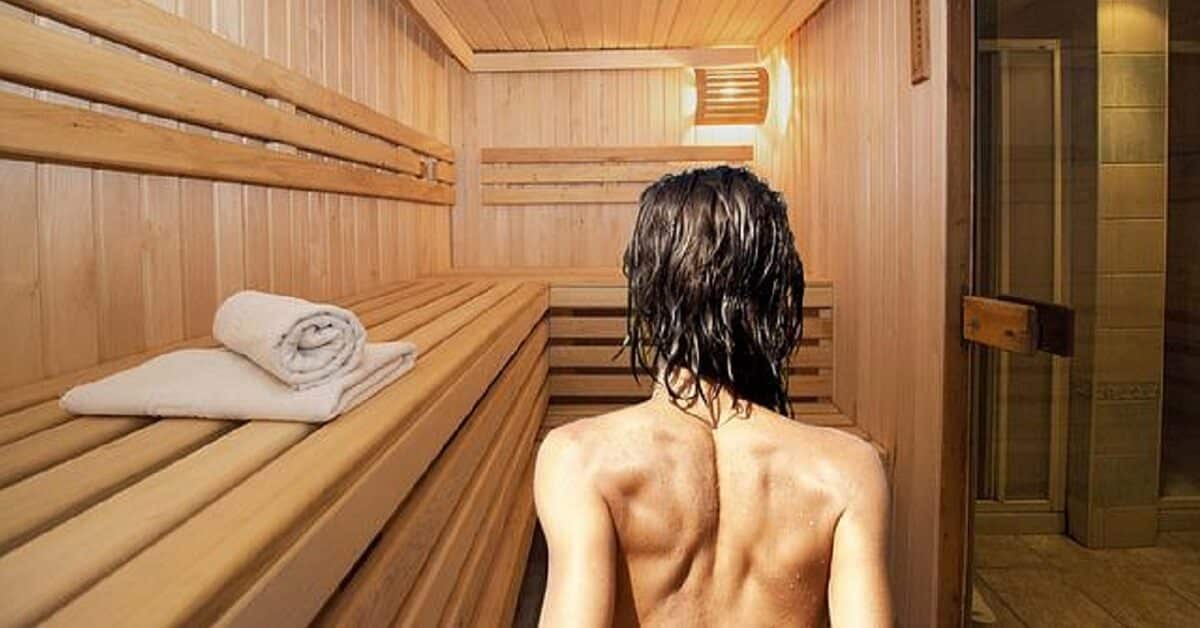
The primary function of sweating is to regulate body temperature and prevent overheating.
Your skeletal muscles generate heat when you do calisthenics (push-ups and sit-ups) or cardio activities (trampolining and skateboarding).
Your body needs to dissipate the excess heat generated during physical activity to maintain body temperature within a healthy range. It does this partly by sweating.
The evaporation of sweat (water and salt) from the skin cools the body.
Your body also generates heat while you are at rest. Energy generated during complete physical rest is known as basal metabolic rate (BMR) or resting metabolic rate (RMR).
[Note that BMR and RMR are different, but researchers sometimes use the terms interchangeably. Learn more about the difference between BMR and RMR here.]
BMR/RMR is the energy expenditure due to performing essential physiological functions, such as maintaining your heartbeat and digesting food.
Sweating during a sauna session is the body’s thermoregulatory reaction to prevent the body from overheating.
How sweating helps regulate body temperature
Your body conveniently dissipates heat in a cold environment.
However, the temperature in a sauna may be as high as 65.5-90.5 °C (150-195 °F). When the environmental temperature is high, heat builds up in the body.
The buildup of heat increases body temperature and thermal stress. It may also slightly increase metabolism.
If the environmental temperature is higher than body temperate, your body may absorb heat from the environment, further increasing thermal stress and body temperature.
The body has multiple mechanisms for offloading or dissipating excess heat and preventing overheating.
One mechanism involves increased blood flow to the skin by widening blood vessels (vasodilation).
A second mechanism is sweating.
Sweating helps to dissipate heat and prevent overheating. The water loss due to sweating in a sauna may be associated with significant weight loss.
Sweating due to passive heating is similar to sweating on a hot day. On a hot day, you may sweat even while resting because a hot environment imposes thermal stress on the body.
But while sweating does not burn significant calories, it may indicate the intensity of physical exercise.
You tend to sweat more profusely during intense than light activity. That is because your muscles generate heat during physical activity, and your body tries to shed it through sweating.
Sauna weight loss calculator
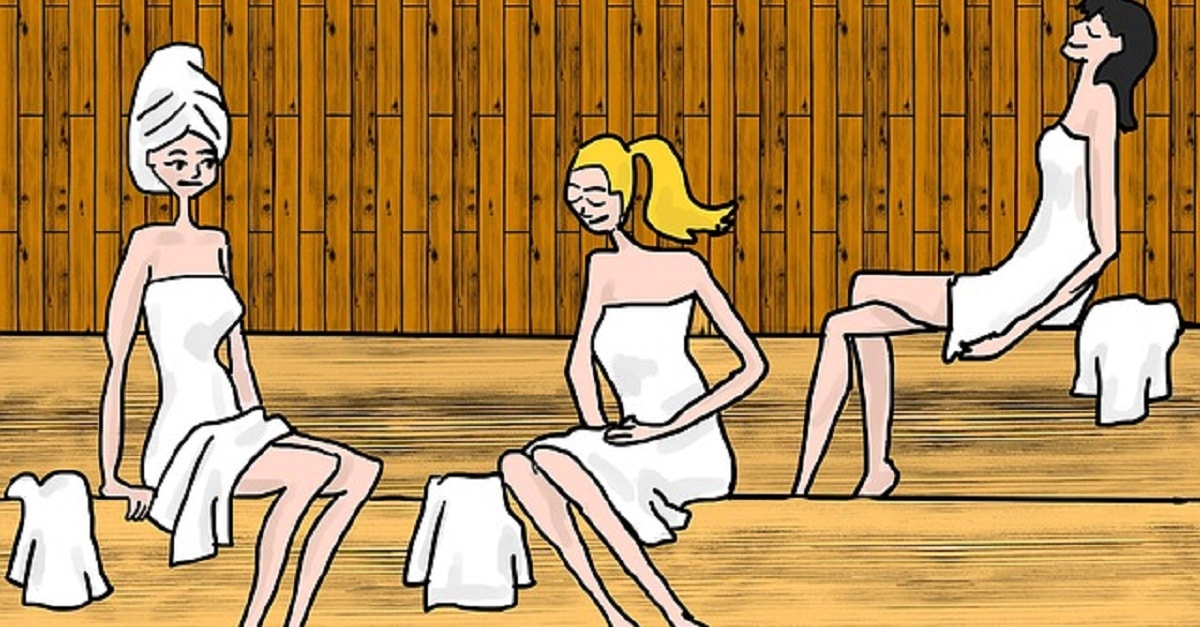
Our Sauna Weight Loss Calculator (see below) allows you to estimate how much body weight (body mass) you will likely lose during 20 minutes in a sauna at a temperature of 90°C and humidity up to 35%.
Remember that most of the weight loss experienced in a sauna is due to water loss through sweating. Due to the risk of dehydration during passive heating, you must take care to rehydrate during and after a session.
Learn more about the signs and symptoms of dehydration to look out for during sauna use (follow links):
- Signs and symptoms of mild dehydration
- Symptoms of moderate dehydration
- Symptoms of severe dehydration
The calculator is based on a study by Podstawski and colleagues (2014) (read more about the study below).
Podstawski and colleagues (2014) investigated the relationship between body mass index (BMI) and body mass loss (BML) in a dry sauna (temperature 90°C, humidity 35%).
The study involved 674 sedentary students, including 326 women and 348 men, aged 19-20.
The researchers exposed participants to two sauna sessions, 10 minutes each, with a 5-minute break in-between sessions.
They found that underweight subjects (subjects with a low BMI) recorded the lowest BML while overweight and obese subjects (subjects with a high BMI) had the highest BML.
The authors concluded that overweight individuals lost more water and thus more weight inside a sauna than normal and underweight individuals.
They advised that because overweight and obese individuals were at a higher risk of dehydration, they should pay more attention to rehydrating while using saunas.
The researchers also developed a set of equations to estimate the amount of fluid to be replenished by men and women and calculate BML based on a person’s BMI (see formulas below):
Women:
BML= -0.5376+0.0416BMI (kg)
Men:
BML= -0.7546+0.0540BMI (kg)
The authors concluded that a change in BMI by 1 point led to an average BML change of 42g for women and 54g for men.

